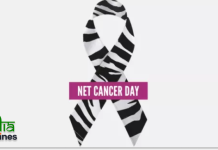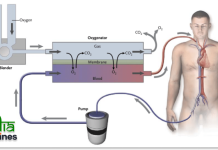
Heart disease remains a leading cause of death worldwide, but advances in modern medicine have significantly improved the diagnosis, treatment, and management of various heart conditions. This guide will explore seven types of heart diseases that require modern treatment, offering insights into their causes, symptoms, and contemporary therapeutic approaches.
1. Coronary Artery Disease (CAD)
Understanding Coronary Artery Disease
Coronary artery disease (CAD) occurs when the coronary arteries, which supply blood to the heart muscle, become narrowed or blocked due to the buildup of plaque. This can lead to chest pain (angina), heart attacks, and other serious complications.
Symptoms
- Chest pain or discomfort
- Shortness of breath
- Fatigue
- Heart attack (severe cases)
Modern Treatment
- Medications: Antiplatelet drugs, statins, beta-blockers, and nitrates.
- Lifestyle Changes: Healthy diet, regular exercise, quitting smoking.
- Procedures: Angioplasty with stenting to open blocked arteries, and coronary artery bypass grafting (CABG) for severe cases.
2. Heart Valve Disease
Understanding Heart Valve Disease
Heart valve disease involves damage or dysfunction of one or more of the heart’s valves, leading to improper blood flow. Common conditions include aortic stenosis, mitral regurgitation, and mitral stenosis.
Symptoms
- Shortness of breath
- Fatigue
- Swelling in ankles and feet
- Irregular heartbeat
Modern Treatment
- Medications: Diuretics, anticoagulants, and beta-blockers.
- Minimally Invasive Procedures: Transcatheter aortic valve replacement (TAVR) for aortic stenosis.
- Surgery: Valve repair or replacement, using either mechanical or biological valves.
3. Heart Failure
Understanding Heart Failure
Heart failure occurs when the heart is unable to pump blood effectively, leading to a buildup of fluid in the lungs and other parts of the body. It can be caused by various underlying conditions, including CAD, high blood pressure, and diabetes.
Symptoms
- Shortness of breath
- Chronic fatigue
- Swelling in legs, ankles, and feet
- Rapid or irregular heartbeat
Modern Treatment
- Medications: ACE inhibitors, beta-blockers, diuretics, and aldosterone antagonists.
- Lifestyle Changes: Sodium-restricted diet, regular physical activity, and weight management.
- Advanced Therapies: Implantable cardioverter-defibrillators (ICDs), cardiac resynchronization therapy (CRT), and in severe cases, heart transplant.
4. Arrhythmias
Understanding Arrhythmias
Arrhythmias are irregular heartbeats that can be too fast (tachycardia), too slow (bradycardia), or erratic. Common types include atrial fibrillation, ventricular tachycardia, and bradycardia.
Symptoms
- Palpitations
- Dizziness or lightheadedness
- Fainting (syncope)
- Shortness of breath
Modern Treatment
- Medications: Antiarrhythmics, beta-blockers, and calcium channel blockers.
- Medical Procedures: Catheter ablation to correct abnormal electrical pathways.
- Devices: Pacemakers for bradycardia, and ICDs for life-threatening arrhythmias.
5. Cardiomyopathy
Understanding Cardiomyopathy
Cardiomyopathy refers to diseases of the heart muscle that can lead to heart failure. Types include dilated cardiomyopathy, hypertrophic cardiomyopathy, and restrictive cardiomyopathy.
Symptoms
- Shortness of breath
- Fatigue
- Swelling in legs, ankles, and feet
- Irregular heartbeats
Modern Treatment
- Medications: Beta-blockers, ACE inhibitors, and diuretics.
- Lifestyle Changes: Avoiding alcohol, maintaining a healthy diet, and engaging in moderate exercise.
- Advanced Treatments: ICDs, CRT, and in severe cases, heart transplant.
6. Congenital Heart Disease
Understanding Congenital Heart Disease
Congenital heart disease includes a range of structural problems with the heart that are present at birth. These defects can affect the heart’s walls, valves, and blood vessels.
Symptoms
- Rapid breathing
- Cyanosis (bluish tint to skin, lips, and fingernails)
- Fatigue
- Poor weight gain in infants
Modern Treatment
- Medications: To manage symptoms and prevent complications.
- Minimally Invasive Procedures: Catheter-based interventions to correct defects.
- Surgery: Open-heart surgery to repair complex congenital defects.
7. Aortic Aneurysm
Understanding Aortic Aneurysm
An aortic aneurysm is an abnormal bulge in the wall of the aorta, the main artery carrying blood from the heart to the rest of the body. If it ruptures, it can be life-threatening.
Symptoms
- Often asymptomatic until rupture
- Pain in the back or abdomen (if the aneurysm is large)
- Pulsating sensation near the navel
Modern Treatment
- Monitoring: Regular imaging tests to monitor small aneurysms.
- Medications: Blood pressure-lowering drugs to reduce the risk of rupture.
- Surgical Intervention: Endovascular aneurysm repair (EVAR) or open surgery for larger aneurysms at risk of rupture.
What Does Modern Heart Disease Treatment Mean?
Modern heart disease treatment encompasses a range of advanced medical interventions designed to manage and cure various heart conditions more effectively than traditional methods. This includes the use of sophisticated medications like statins, ACE inhibitors, and beta-blockers to control symptoms and prevent complications. Minimally invasive procedures such as angioplasty and stenting offer quicker recovery times compared to traditional open-heart surgeries. Innovations in surgical techniques, like transcatheter aortic valve replacement (TAVR) and robotic-assisted surgery, provide safer and more precise options for patients. Additionally, advanced diagnostic tools, including 3D imaging and genetic testing, enable early detection and personalized treatment plans. The integration of digital health technologies, such as wearable devices and telemedicine, further enhances patient monitoring and follow-up care, ensuring continuous management of heart health. These modern treatments collectively improve outcomes, reduce recovery times, and enhance the overall quality of life for patients with heart disease.
Who Should Buy Heart Health Insurance for Advanced Modern Treatment?
Heart health insurance is beneficial for individuals who have a family history of heart disease, existing cardiovascular conditions, or lifestyle factors that increase their risk. Those with known risk factors such as high blood pressure, high cholesterol, diabetes, or obesity can benefit from having heart health insurance to cover the costs of advanced modern treatments. Additionally, individuals who lead stressful lives or have jobs that expose them to high levels of stress should consider heart health insurance.
This type of insurance provides coverage for a range of services, including diagnostic tests, medications, surgeries, and rehabilitation programs. It ensures that individuals have access to timely and comprehensive care, including innovative treatments like minimally invasive procedures and cutting-edge surgical techniques. By investing in heart health insurance, individuals can safeguard their financial stability while prioritizing their cardiovascular health, ensuring they receive the best possible care in the event of a heart-related medical emergency or condition.
Conclusion
Advances in modern medicine have significantly improved the diagnosis, treatment, and management of heart diseases. Understanding the various types of heart diseases and the contemporary treatments available can help patients and their families make informed decisions about their care. If you or a loved one is dealing with a heart condition, consult with a cardiologist to explore the best treatment options tailored to your specific needs.




































Excellent post with lots of actionable advice! This blogpost answered a lot of questions I had. Your perspective on this topic is refreshing! Your writing style makes this topic very engaging. Your perspective on this topic is refreshing!